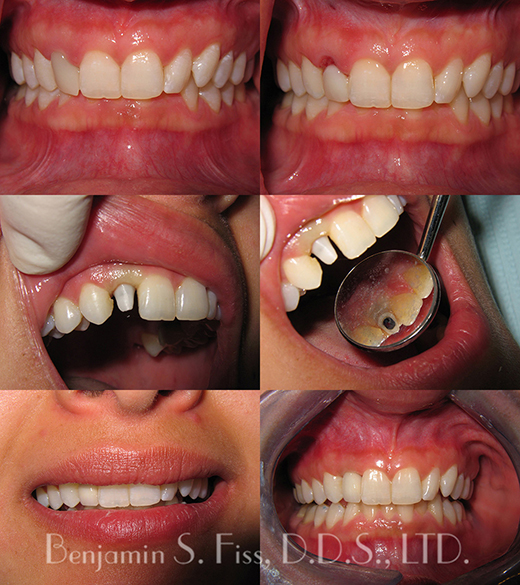The 3-Minute Rule for Dental Sense
The 3-Minute Rule for Dental Sense
Blog Article
Fascination About Dental Sense
Table of ContentsExamine This Report about Dental Sense7 Simple Techniques For Dental SenseSome Known Facts About Dental Sense.7 Simple Techniques For Dental Sense
are clinical tools operatively dental implanted right into the jaw to restore an individual's capability to chew or their appearance. They give support for artificial (fake) teeth, such as crowns, bridges, or dentures. When a tooth is shed due to injury or condition, a person can experience difficulties such as quick bone loss, defective speech, or modifications to chewing patterns that lead to pain.Dental dental implant systems consist of an oral implant body and dental implant abutment and may additionally consist of a joint addiction screw. Wisdom tooth cavity. The oral implant body is operatively inserted in the jawbone in location of the tooth's origin. The dental implant abutment is generally affixed to the implant body by the abutment fixation screw and expands via gum tissues right into the mouth to sustain the affixed fabricated teeth
(https://fliphtml5.com/homepage/hegcy)Structure of The Oral Implant System selecting oral implants, speak to your oral provider concerning the prospective benefits and risks, and whether you are a prospect for the treatment. Things to take into consideration: Your total health is an important consider establishing whether you are an excellent candidate for oral implants, the length of time it will take to heal, and how much time the dental implant might stay in location.
Smoking might affect the recovery process and lower the long-lasting success of the implant. The recovery procedure for the dental implant body might take several months or longer, throughout which time you generally have a short-lived joint in location of the tooth. the dental implant procedure: Meticulously follow the oral hygiene directions given to you by your oral supplier.
A Biased View of Dental Sense
Implant failing can cause the demand for another surgery to fix or change the implant system. Brings back the ability to chew Recovers aesthetic look Assists maintain the jawbone from diminishing as a result of bone loss Protects the health of the bordering bone and gum tissues Aids maintain nearby (close-by) teeth stable Enhances lifestyle Damage to surrounding all-natural teeth throughout dental implant placement Injury to the surrounding tissues throughout surgical procedure, such as sinus opening Injury throughout surgery (for instance, fracture of surrounding jawbone) Inadequate feature, such as seeming like the teeth do not attack with each other normally An experience that the tooth hangs or twisting in position arising from a joint screw loosening Implant body failure (looseness of the implant body) as a result of systemic infection, which might be most likely in patients with unrestrained diabetes mellitus because of local infection in bone and gum tissues supporting the implant body because of delayed recovery, which might be more probable in people that smoke Trouble cleaning up the periodontals around the implant, causing bad oral hygiene Without treatment gum disease Post-surgical feeling numb because of nerve impingement or damage Constantly notify healthcare carriers and imaging service technicians that you have dental implants prior to any magnetic vibration imaging (MRI) or x-ray procedures.
FDA is not conscious of any adverse events reported for MRI or x-ray procedures with dental implants. Dental implants systems are commonly made of materials that comply with international agreement requirements of the International Organization for Standardization (ISO) or ASTM International. These criteria have information of what makes a risk-free product.

A dental implant is a framework that changes a missing out on tooth. With screw-like tools, the doctor inserts a dental implant right into the jawbone, and it acts as a support for a fabricated tooth, called a crown.
Getting The Dental Sense To Work
Some people are not eligible for dental implant surgical treatment. It is for dental doctors to operate people with: intense illnessuncontrollable metabolic diseasebone or soft tissue condition or infectionIf these issues are settled, an individual can have the surgery. In, dental specialists avoid from running on individuals with: If individuals with any of the above go through oral implant surgical treatment, there is a greater risk of the dental implant failing.

Dental implant surgery is an individualized process. It's not the exact same for every person. Yet the following gives a basic summary of why not find out more what you can anticipate your dental practitioner, oral cosmetic surgeon, periodontist or prosthodontist to do: Place the implant surgically. Provide you time to recover. Affix the article and last crown, bridge or denture.
Next, your doctor will thoroughly put the dental implant right into your jaw. If your implant is near the front of your mouth, your dental practitioner will make a short-term tooth for you to wear till you recover.
Not known Factual Statements About Dental Sense
Your provider can inform you what to expect in your scenario. During the recovery stage, your jawbone needs to fuse to the dental implant. This process, called osseointegration, is critical for security and lasting success. This procedure can take anywhere from 3 to 9 months. Sometimes, it may take much longer.
As soon as your implant heals, your dental professional can attach the joint (little adapter blog post) and your last reconstruction (crown, bridge or denture). This typically takes about one hour to complete and might require a second minor surgical treatment. You shouldn't feel any type of pain throughout your dental implant procedure since your copyright will certainly use medication to numb your gum tissues.
Report this page